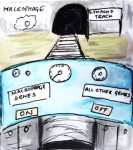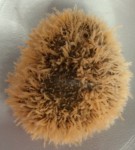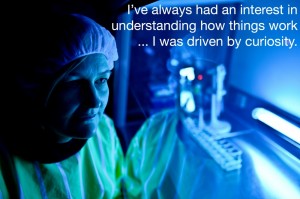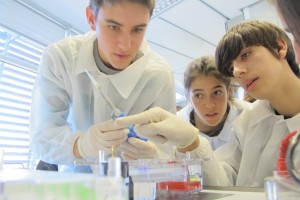A new stem cell film plus more from EuroStemCell
Posted by Kate Doherty, on 4 November 2014
Hello! We’ve got lots of new things to share, including a film and fact sheet combo that looks at cell fate, cell identity and reprogramming, a closer look at an unusual model organism, and an interview with stem cell scientist and Parkinson’s disease specialist Malin Parmar.
Also featured in this news update: schools outreach in Scotland and Spain, and six new Spanish translations.
As ever, we’re keen to hear from readers of The Node – on Twitter, Facebook, or via our website. You can get involved as a writer or translator, tell us about the stem cell events you’re involved in, make comments or suggestions, or just say hello! And for regular stem cell news, why not subscribe to our monthly newsletter?
Cell Fate: Journeys to Specialisation
EuroStemCell’s latest film looks at how specialized cells develop from stem cells.
Cell Fate: Journeys to Specialisation premiered in Heidelberg earlier this month, followed by a lively Q&A session with Andreas Trumpp, featured scientist Thomas Graf, and great questions from the audience.
Read more about the launch and the making of the film.
New fact sheet: Cell identity and reprogramming

Our body contains several hundred different types of specialised cells. Each cell has very specific features that enable it to do its job. Yet every cell in your body contains the same genes – the same biological ‘instruction book’. So what makes each type of cell different? And can we control or change cell identities? How might this help us develop new approaches to medicine?
Snail fur: an alternative model organism for stem cell research
 In this guest blog post Hakima Flici, a postdoctoral researcher at NUIG’s Regenerative Medicine Institute (REMEDI), tells us a bit more about her particular area of stem cell research…the model organism hydractinia echinata.
In this guest blog post Hakima Flici, a postdoctoral researcher at NUIG’s Regenerative Medicine Institute (REMEDI), tells us a bit more about her particular area of stem cell research…the model organism hydractinia echinata.
The work of this REMEDI lab also featured recently in a BBC Future news story, The animal that regrows its head (and in Spanish: El animal que regenera su propia cabeza)
Interview with Malin Parmar: cell therapy for Parkinson’s disease
 Malin Parmar heads a research group focused on developmental and regenerative neurobiology at Lund University in Sweden. The ultimate goal of her research is to develop cell therapy for Parkinson’s disease.
Malin Parmar heads a research group focused on developmental and regenerative neurobiology at Lund University in Sweden. The ultimate goal of her research is to develop cell therapy for Parkinson’s disease.
At this year’s Hydra summer school we spoke to Malin about how she got started in stem cell research, what she’s working on at the moment, and her view of the prospects for treating Parkinson’s disease with stem cells.
Amazing stem cell questions at Inverkeithing High School
 This Stem Cell Awareness Day PhD student Jamie Gillies joined Richard Axton and Cathy Southworth at Inverkeithing High School in Scotland to share with students the exciting world of stem cell biology and the work of being scientists. Here’s his account of the day, and the intriguing questions the students asked.
This Stem Cell Awareness Day PhD student Jamie Gillies joined Richard Axton and Cathy Southworth at Inverkeithing High School in Scotland to share with students the exciting world of stem cell biology and the work of being scientists. Here’s his account of the day, and the intriguing questions the students asked.
Transdifferentiation workshops for secondary students at CRG
 The Centre for Genomic Regulation (CRG) in Barcelona has started the school year with a new workshop for high school students. The workshop is taking place every Thursday in the CRG Teaching and Training Lab facilities, a space specifically designed for the training of new researchers and for outreach activities.
The Centre for Genomic Regulation (CRG) in Barcelona has started the school year with a new workshop for high school students. The workshop is taking place every Thursday in the CRG Teaching and Training Lab facilities, a space specifically designed for the training of new researchers and for outreach activities.
Six new Spanish fact sheet translations
Muchas gracias to our translators!
- Reprogramación celular: como convertir cualquie célula del cuerpo en una célula madre pluripotente
- Investigación y terapia con células madre: tipos de células madre y sus aplicaciones actuales
- Ética y reprogramación celular: cuestiones éticas después del descubrimiento de las células iPS
- Nuevas herramientas para la investigación de enfermedades: células reprogramadas en modelaje de enfermedades
- Enfermedad hepática crónica: Como puede ayudar la medicina regenerativa?
- Infarto: Cómo pueden ayudar las células madre?
Subscribe and stay informed
EuroStemCell’s newsletter is sent out monthly – subscribe now for regular updates.


 (2 votes)
(2 votes)